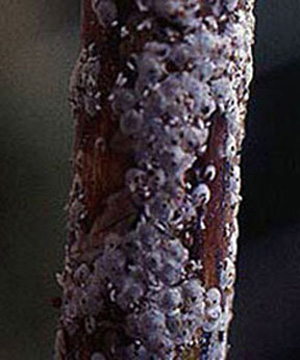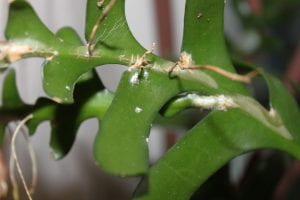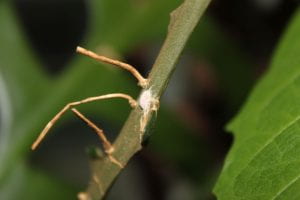Scale insects:
The visible part of a scale insect is a waxy, shield-shaped covering that protects maturing stages of the adult insect. Under this waxy covering, the female insect feeds, mates, and lays eggs. Scale insects feed on plant juices, and in severe cases, cause reduced plant vigor. Treatment and spread of scale insects can vary depending on the species, so correct identification of the pest is highly recommended before beginning treatment.


More putnam scale information (Rutgers)
More terrapin scale information (NC State)
More oystershell scale information (Colorado State University)
Mealybugs
Mealybugs are soft-bodied relatives of scale insects. Similarly to scale insects, mealybugs will suck sap from tender tissues. Unlike scale insects, adult mealybugs are mobile.
Mealybugs are sexually dimporhic. Adult females are white to pink in color and have a body shape reminiscent of pill bugs or roly polies. Male mealybugs are winged, and more closely resemble drosophila or gnats.
Mealybugs will leave cottony egg masses on undersides of leaves, or may live and propagate underground in blueberry roots.





